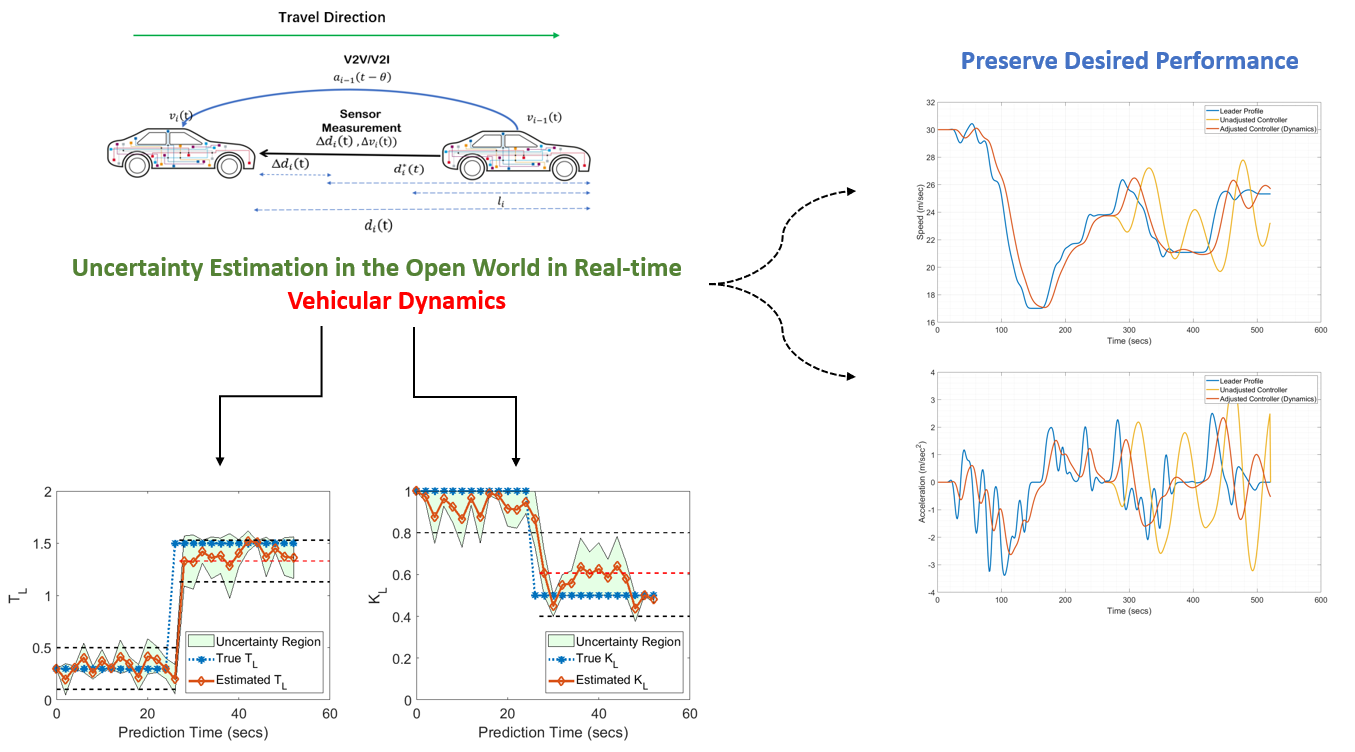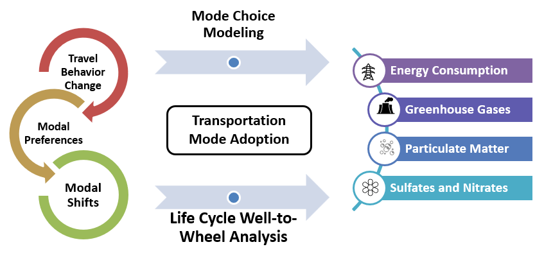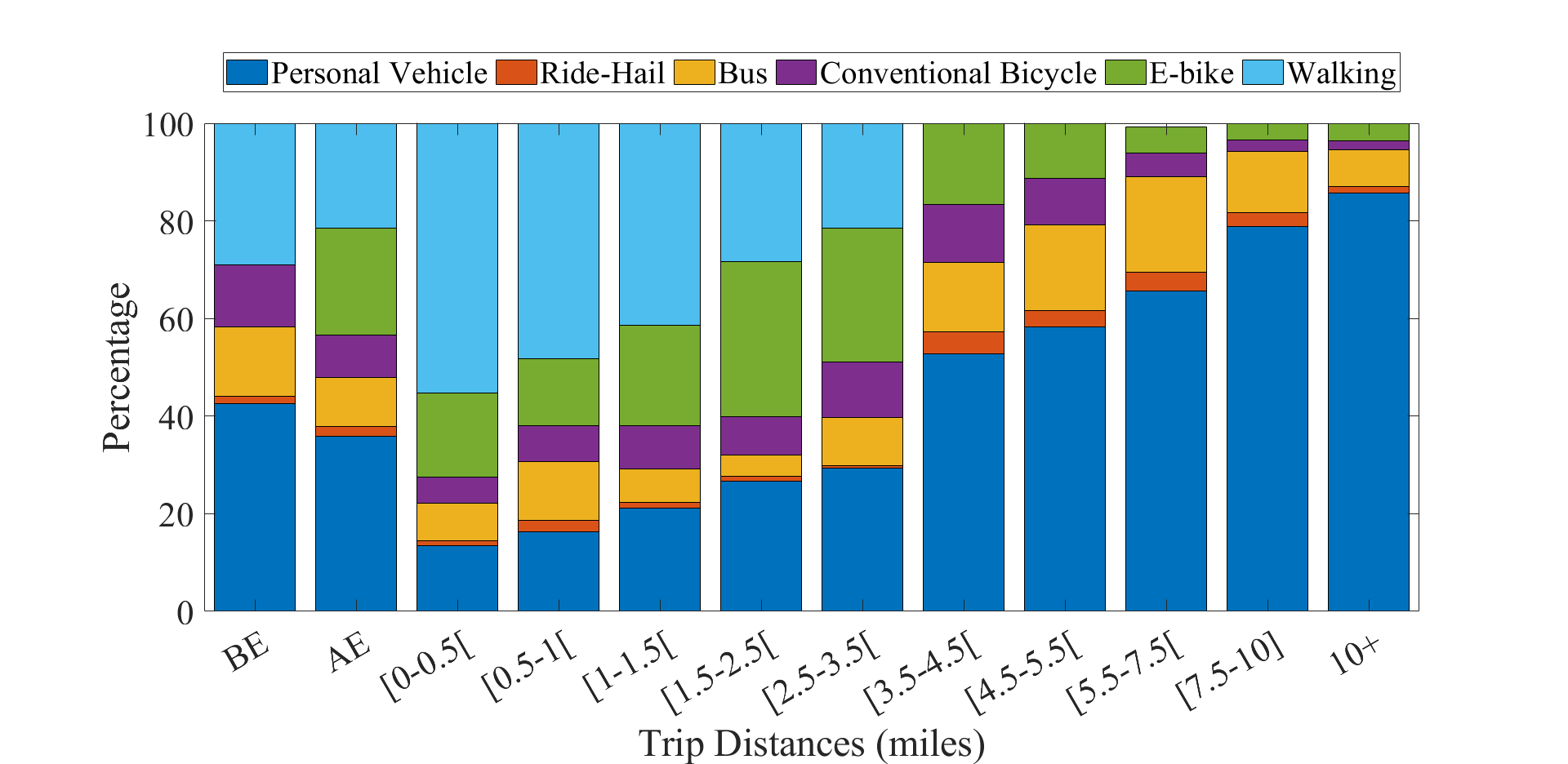🌟 Latest Highlight 🌟
This Spring 2025, I joined the Department of Civil and Environmental Engineering at the University of Nebraska-Lincoln as an Assistant Professor. I am actively recruiting students at all levels (undergraduate, master’s, and Ph.D.) to join my research team.
Our Research Lab
We specialize in the operational analysis and artificial intelligence applications for emerging transportation technologies. Our research addresses challenges in automation, connectivity, and the complex behaviors of adoption ecosystems.
| Key Research Themes | |
|---|---|
| Traffic flow theory | Cognitive engineering |
| Machine learning | Human-Machine interactions |
| Control theory | Industrial Ecology |
The ultimate goal of our work is to design and deploy technologies that improve operational performance and align with societal needs.
About Me
I hold a Ph.D. in Civil and Environmental Engineering from the University of Wisconsin-Madison (2022), co-advised by Prof. Soyoung Ahn and Prof. Andrea Hicks. Check my doctoral thesis. Prior to that, I earned my B.E. from the American University of Beirut, in my home country of Lebanon. Originally I am from the mountainous village of Aabey in Lebanon. I grew up strolling narrow streets, climbing mountain woods, and preserving Mediterranean architecture.
Some of What We Have Worked On
Domain-guided control, Human-Machine interactions, Traffic flow theory, Open world reliability, Knowledge sharing and personalization, Federated analytics, Autonomous vehicles adoption patterns, E-bike sharing programs, Transportation emissions calculator, Emissions during the pandemic.
Problems I Am Currently Working On
- Cyber-Physical Personalized Systems
Modern engineering systems excel at real-time sensing, processing, and data exchange. My research focuses on creating distributed algorithms that facilitate communication between agents, infrastructure, and humans. This enables:- Local models: Individual-level operations.
- Global models: System-wide objectives like security, safety, stability, and energy efficiency.
Recent work: Knowledge Sharing and Personalization.
- Explainable and Reliable AI for Engineering Systems
I investigate the integration of physics-based models and artificial intelligence to enhance dynamic systems. My research addresses critical questions:- How, when, and where should AI or physics-based models be employed?
- To what extent can they improve real-world operations?
Recent work: Traffic Wave Properties, Human-Machine Interactions
- Sustainable Complex Transportation
Revealing hidden and nonlinear sustainability implications from adopting emerging transportation technologies:- Modeling competition between traditional modes, micro-mobility, and transit.
- Designing transport networks to balance diverse and competing modes.
- Reducing emissions equitably using tools like the Transportation Emissions Calculator.
Recent work: Reduced Travel Emissions Through a Carbon Calculator.
Research Spotlight
Domain and Physics-Guided Control for Autonomous Vehicles
Autonomous vehicles (AVs) often prioritize individual performance, overlooking traffic-level stability and efficiency. This research introduces a physics-based response function to bridge AV control algorithms with traffic dynamics, enabling control designs that optimize system-wide performance.

Our method connects control algorithm parameters to traffic-level behavior, ensuring a more holistic design of AV systems.
Real-World Monitoring and Uncertainty Management
In real-world environments, AVs operate under dynamic uncertainties. To address this, we propose a methodology for:
- Real-Time Parameter Estimation: Using Stochastic Gradient Langevin Dynamics (SGLD) to estimate uncertainty in real-time.
- Performance Monitoring: Continuous evaluation of AV stability, safety, and traffic impacts.
- Strategic Adjustments: Adapting driver models dynamically to address detected anomalies.

For further details, refer to the following paper:
Collaborative Learning for Autonomous Vehicles
This study proposes a collaborative learning framework where autonomous vehicles (AVs) share knowledge while retaining personalized models tailored to unique conditions. Using federated learning, this approach ensures safety and reliability without sharing raw data.

Emerging Modes of Transportation: Adoption Patterns and Environmental Implications
This research examines how emerging modes of transportation, such as autonomous vehicles and e-bikes, influence travel behavior and environmental outcomes.

Autonomous Vehicle Adoption
AV adoption causes shifts in travel behavior, resulting in changes to emissions and energy use. Our analysis highlights opportunities for reducing environmental impacts through electrification.

E-bike Sharing Programs
E-bikes significantly reduce emissions for trips between 1–2.5 miles, promoting a shift to sustainable transportation options.
Recent News
- January 2025: I joined the University of Nebraska-Lincoln as an Assistant Professor
- January 2025: Our paper Learning Driver Models for Autonomous Vehicles via Knowledge Sharing and Personalization won the D.Grant Mickle Award at the Transportation Research Board
- January 2025: Our paper "Optimal Measurement of Traffic Hysteresis under Traffic Oscillations: A Binary Integer Programming Approach" won the Nathan Gatner Award by the ACP50 committee at TRB
- May 2024: Our paper Reduced travel emissions through a carbon calculator with accessible environmental data: a case study in Madison, Wisconsin is published at Nature:Sustainable Mobility and Transport
 - 2025.jpg)